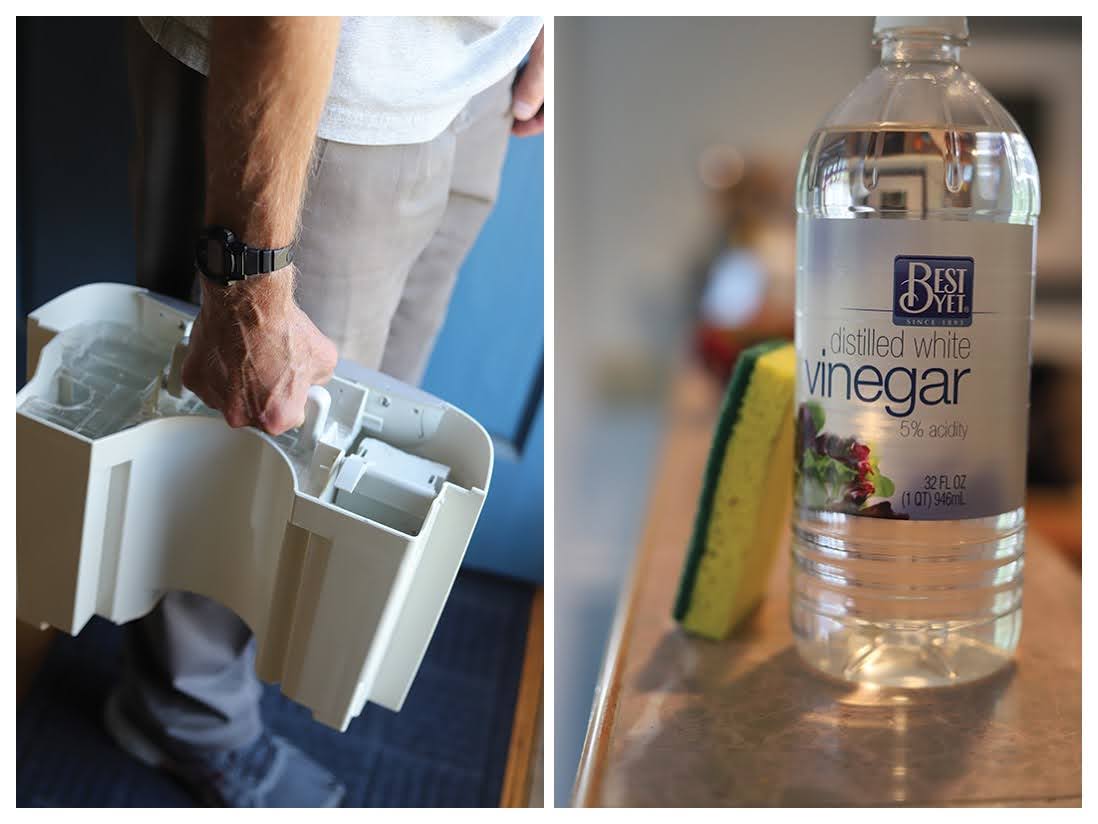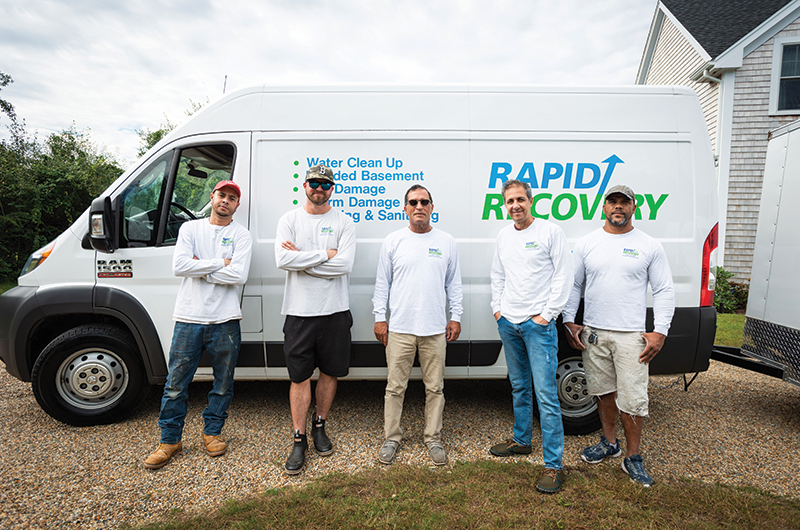Household mold. It’s not just in your bathroom anymore.
Have you been seeing damp, discolored spots on your bathroom tiles? Or abstract expression-like bursts or streaks on your walls? Maybe you started smelling a dense musk in your house or where you work.
If so, you’re encountering mold. You might think it exists only in your shower, bathroom or kitchen. But mold is found in the strangest of places, including on clothes and toys, inside books, and on paper, glass, plastic and fabric. Most often, homeowners or renters try to get rid of it by applying a sponge to it, or maybe by spray cleaning to lessen or remove the black or green appearance. But this isn’t just dirt that can be wiped away. It’s a fungus that can be dangerous to your health, damaging to your possessions and less than ideal for your property value. Vineyard residents would do well to start being vigilant about spotting and treating it.
Mold is one of the most common and widespread fungi. It’s not just the green and black gooey stuff you find in your bathroom: it’s also pink and white. More than 300,000 forms of mold exist. Mold produces spores that thrive in warm, moist environments. When spores land on a damp spot, they begin to grow. The spores travel through the air, so transmission and multiplication is easy – and hard to contain.
It’s not just an unsightly and smelly annoyance: mold is a health and safety issue. It can damage or destroy your belongings and also wreak havoc with your health. Most people can breathe in the fungal spores without a problem, but those with weakened immune systems or lung disease can have severe reactions. Resulting problems might include upper respiratory infections, trouble breathing and hay fever symptoms.
During this past summer of extreme moisture, Vineyard residents battled mold through a variety of products and methods. Bleach and tea tree oil are commonly used and some people with consistent problems regularly use products such as CLR Mold & Mildew Cleaner, Simple Green, Concrobium Mold Control, DampRid, Magic Eraser or OxiClean (for fabrics). Some people have had to throw out items of clothing or couches because the mold just couldn’t be removed. Everyone trying to remove mold from their home agrees that it takes not just a light touch but hard scrubbing; old-fashioned elbow grease is a key ingredient to successful removal.
But what’s a home or business owner, or renter, to do when the problem is bigger and mold remediation is needed? Call in the pros.
Querli Sales has operated her own cleaning business on the Island for 14 years. She offers residential and commercial cleaning services and has seen mold growth of all types and with varying levels of damage. “You really have to pay attention,” she notes. Querli advises home and business owners to particularly keep an eye on windows, bathrooms, the insides of cabinets and basements. To clear mold, she uses a common household product: vinegar. She sprays a wide swath of vinegar on the walls and surfaces she is working on. Another option she uses is bleach, which she notes will go inside the paint and “kill the funk.”
A vinegar scrub might work to clear the surface. (Vinegar does, in fact, kill most molds.) But since mold often shows on the surface only when the source lies deeper in sheetrocked walls or behind tile in bathrooms or kitchens, professional removal is needed. Given how widespread the problem is on the Vineyard, we’re lucky to have certified professionals based locally who have decades of experience in removing, treating and preventing the problem.
Rory Moreis has owned Rapid Recovery in Oak Bluffs since 1999. The company’s services include mold remediation and fire damage. Rory has been in the business long enough to get a sense of the scope of mold damage from the first whiff of musty smell he gets on walking into a house or business, even before he begins monitoring the interior with a moisture meter.
He describes Martha’s Vineyard as “heaven for mold” because of the high levels of moisture and humidity. Rory believes that July 2021 was the wettest the Island has had on record. Rapid Recovery’s crew of four had a busy summer.
Mold has to be removed – and removed safely – as soon as it is found. Rory advises homeowners who encounter it inside their dwellings to remove it, bag it up and dispose of it in a way that will prevent spread. He also reminds homeowners to keep fans in bathrooms working and to be aware of good ventilation: steam from a shower or bath can stay in the room for 45 minutes, causing moisture to build up on walls, ceilings and other surfaces. He sees a lot of painters use PermaSeal to protect concrete and wood from water rot.
Rory strongly endorses constant running of dehumidifiers. These machines capture the air’s moisture and turn it into water deposited in a removable bucket. The buckets must be manually emptied regularly, and though it might be surprising how often they fill, the frequency of full buckets is a visible sign of just how much moisture is in the air. You can easily purchase a dehumidifer at an appliance store or online. For naysayers who complain about the noise, Rory offers the information that there are new models that “purr like a kitten.” He likens the sound to that of a light fan.
Another solution is a commercial system that pumps the water out of the house. This system can be set up by a professional plumber, working through a home’s PVC pipes or through a hose that drains into a basin. This option is a good one for homeowners who rent their houses or don’t live in them all the time. The automatic drainage means that someone needn’t be monitoring it as frequently as is needed by stand-alone, portable dehumidifiers.
Beth Russell of ServPro at the Triangle in Edgartown feels equally strongly about the need to keep a house or business dry in order to prevent mold. She noted that it takes only 72 hours for mold to form in water damage. Her recommendations for a preventative approach involve running dehumidifiers and airing out the structure to keep it dry.
Beth understands why mold sufferers don’t call a professional in for remediation sooner, but she cautions that the appearance of mold means there is more that can be going on beneath the surface and it could cause you trouble in the long run. Too often, widespread mold is discovered at the point of home inspection when a house is being sold. Unexpected sources of the fungus can be a roof that’s been collecting water from rain or snow or fans (bathroom or kitchen) that vent into attic spaces. Because these are spaces that homeowners don’t often check, the build-up can be bad by the time it’s discovered. The moment of home inspection during a sale is an inconvenient time to find out what’s been lurking in your attic or basement – and it can also be costly to fix a long-standing, unaddressed issue.
At ServPro, Beth and co-owner Bill Russell take the health problems associated with mold seriously. Their employees wear protective covering while at work, particularly to prevent respiratory problems that may develop from breathing in mold spores. Beth advises the same for anyone working on the problem at home: gloves and masks are a must.
Vigilance, protection and prevention: these are the words of advice offered by the Island professionals keeping homes and businesses free of fungus. With the cooler temperatures of fall and more dry air as less rain falls, it’s a good time to air out your home or office. Throw open those windows and breathe deeply.
Elizabeth Bennett is an editor and journalist based part-time in West Tisbury.














Comments